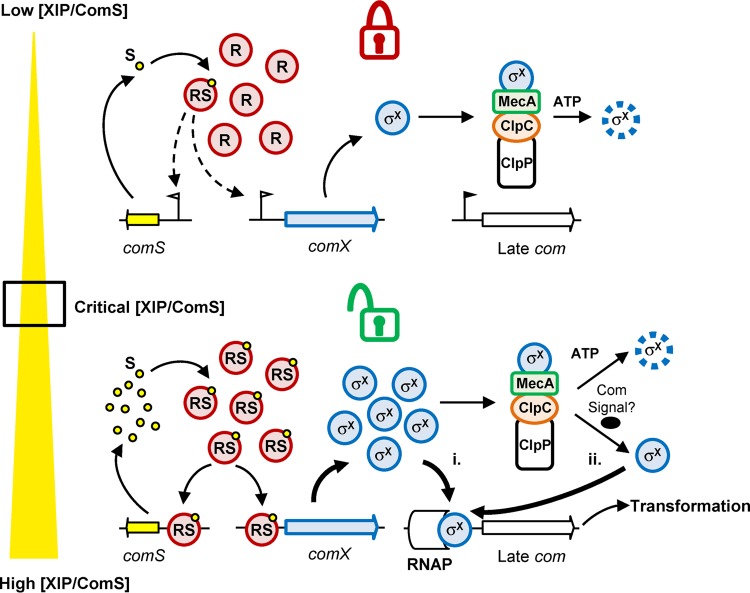FIG 8.
Model of the interplay between the ComRS and MecA-ClpCP systems for competence regulation in S. thermophilus. (Top) Locked competence. At very low XIP/ComS (S) concentrations, free ComR (R) or a small amount of ComRS (RS) complexes is present, which results in a low level of σX production. Under these conditions, adaptor protein MecA represses the onset of competence by selecting σX for degradation by the protease complex MecA-ClpCP. (Bottom) Unlocked competence. Above a critical XIP/ComS concentration, ComRS complexes are formed in large amounts, which results in a high production of σX. Either the high and abrupt σX production saturates the proteolytic machinery (i) or a so-far-unidentified competence signal (Com signal) releases σX from the MecA-ClpCP degradation complex (ii). In both scenarios, free σX molecules interact as an alternative sigma factor with the RNA polymerase (RNAP) and induce late com genes and DNA transformation. Degradation of σX is indicated by a dashed line.

